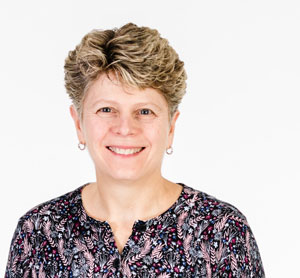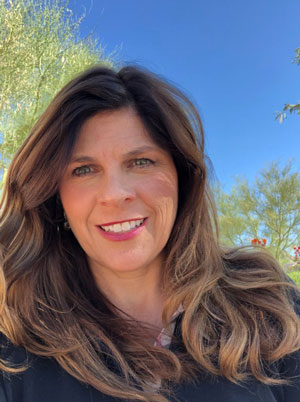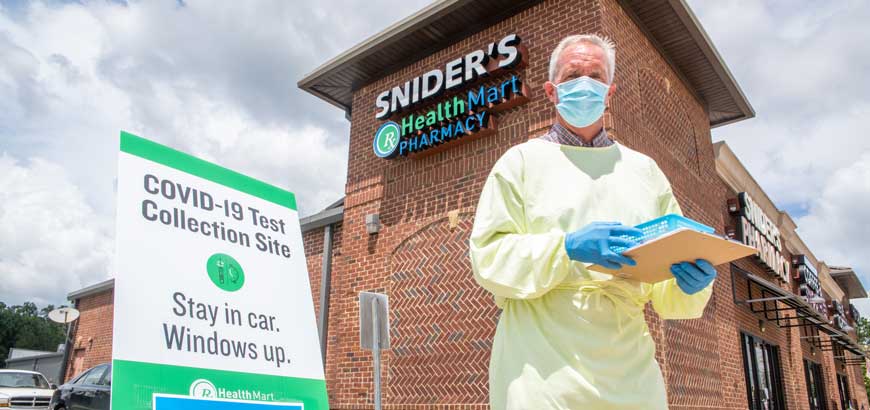Read time: 4.5 minutes
Kelly used to consider herself a healthy person back when she would run with her son in the baby jogger. Now that she’s on disability, she can’t imagine working an eight-hour day.
Since being diagnosed with Multiple Sclerosis more than 30 years ago, Kelly says that managing her symptoms has been emotionally exhausting.
“I had one medication I was getting infused at my doctor’s office and then the next year, the insurance decided that the infusion center was too expensive,” she says. “I think I went like three months beyond the normal time when I was supposed to take the medication.”
Kelly's story is not unique. Specialty therapies designed to treat complex and chronic diseases have led to remarkable outcomes for patients. But due to their high price and the need to comply with certain compliance regulations, patients are often left with the burden of coordinating with their doctors, pharmacies and insurance companies to access their medications – a process that is complicated, time consuming and frustrating.
“Every month, I spend hours and hours on the phone, keeping track of my phone calls, paperwork, talking to my doctors, talking to insurance, just trying to get things approved,” Kelly adds. “I’m not working full time, so I can spend all day on the phone. But what about other people who can’t?”
Revolutionizing Patient Access to Specialty Therapies
The challenge Kelly faced is one of the reasons CoverMyMeds, a part of McKesson Corporation, established AMP: Access for More Patients® (AMP). The end-to-end solution can transform how patients can access, afford and adhere to their medications, reducing the wait time between when a medication is first prescribed by the patient’s healthcare provider and when they start therapy by up to 34%, in some cases.
“With AMP, we give patients the gift of time.”
Launched in 2019, AMP brings together a robust technology platform, deep specialty experience, commercialization expertise, and an established network of more than 750,000 providers. Through a centralized dashboard, the provider, pharmacy and other stakeholders within the patient’s care team can see where patient cases stand in the process, what steps are left to complete, and who needs to take action.
When Vicki Muscarella joined CoverMyMeds in 2014, she was part of a small but dedicated engineering team working diligently to improve the prior authorization process. Her vision has been instrumental in moving from project-oriented methods to outcome-oriented ones.
“I’ve always approached jobs with more interest in the problem I’m solving than in the actual technology,” says Muscarella, vice president of Product, CoverMyMeds. “That’s our approach here. Instead of starting with a solution in mind, we take a problem or a hypothesis about a problem and go from there, because when we help solve a problem for the doctor, we also solve a problem for the patient.”

Vicki Muscarella
Before AMP was established, it could take patients up to eight weeks to receive medication through a traditional pharma-sponsored patient access program because of their complex requirements and manual processes. Today, medical providers can access their specialty cases through their familiar CoverMyMeds workflow or software of choice, which ultimately helps increase patient reach and eliminates the need to use multiple systems.
“With AMP, we give patients the gift of time – time to feel better, to be present with loved ones, and in some cases, time spent out of the hospital,” says Heather Morel, Ph.D., MBA, SVP and president, Provider Solutions (formerly senior vice president and general manager, Access and Adherence, RxCrossroads by McKesson).
Painful Decisions
Medication access delays aren’t the only barriers many patients face today. They often make difficult and risky decisions when they can’t afford their medicine. As reported in the CoverMyMeds 2021 Medication Access Report, more than one in three patients have given up their medications to help pay for life’s essentials and 43% said they’ve had to forgo paying for essentials to afford their medications.
It’s one of the reasons Morel decided to go back to school in her fifties to finish her Ph.D. in Financial Toxicity, a term coined to describe the stressors often experienced by cancer patients who encounter recurring out-of-pocket costs, burn through deductibles, and spend a considerable amount of their savings on treatments.
“Many patients have lost the ability to work like they did before they were diagnosed with a complex or chronic disease and, as a result, they may have less income,” Morel explains. “Those burdens can be just as deadly as the chronic disease they’re hoping to treat.”

Heather Morel
Coupled with the fact that accessing their prescribed therapies can be cumbersome and time-consuming for patients – many of whom are dealing with life-altering diagnoses – financial burdens can take a significant toll.
That’s why, in addition to the automated technology platform AMP provides, it also offers broader resources for patients, including access to pharma-sponsored financial support and adherence services.
As a member of the AMP patient resources team, Emily Horn worked as a case manager to help patients receive and stay on the medications they were prescribed. She would also help patients navigate reimbursement issues, complete benefits information, and manage payment denials and appeals, among other services provided to the patient at no cost.
“Some patients would call me in tears because they were too ill to coordinate with insurance companies, doctor’s offices and financial assistance programs,” she explains. “I’d often hear them exhale with relief after telling them I could call the pharmacy for them or call the insurance company with them.”
And for people like Kelly who have struggled to get the medications they need, technology solutions like AMP bring not only the hope of speeding up access to these treatments, but also of turning their feelings of frustration and defeat into those of encouragement and promise for the future.
Originally published June 2021




Share
Post
Post
Email